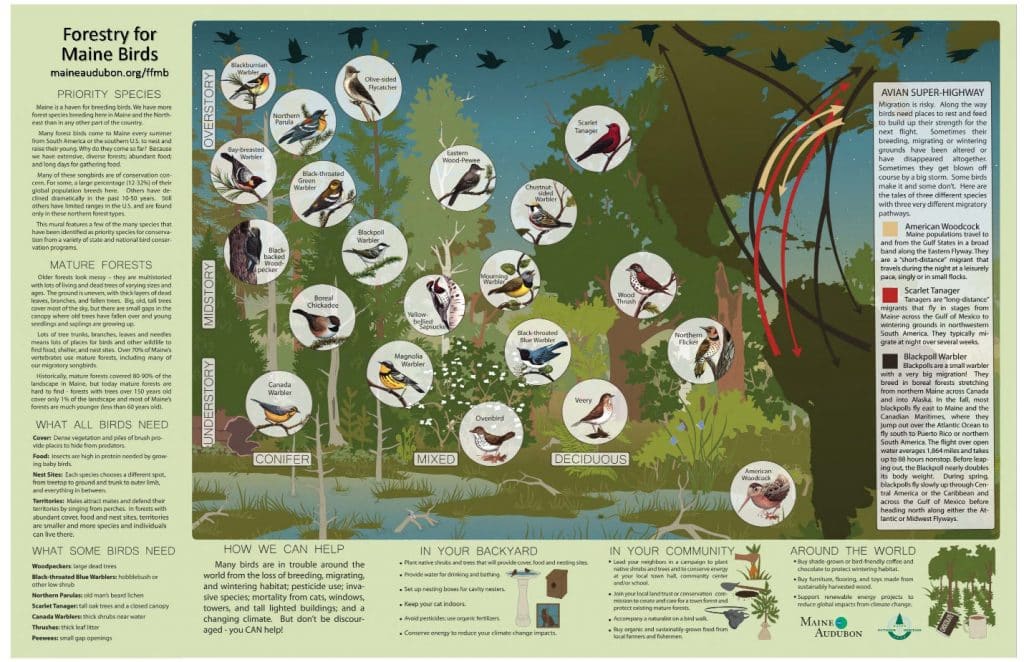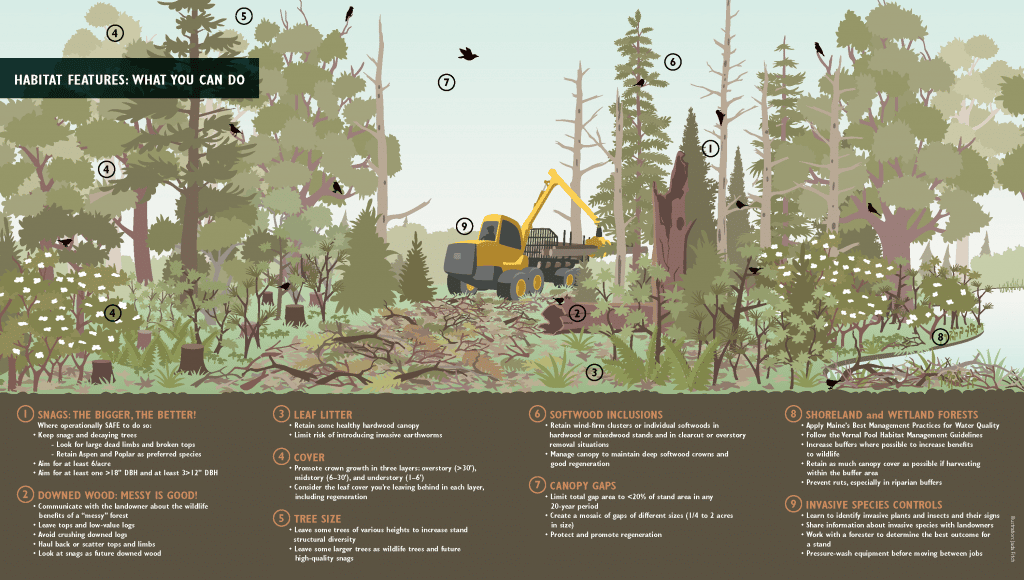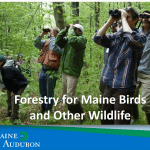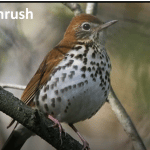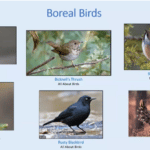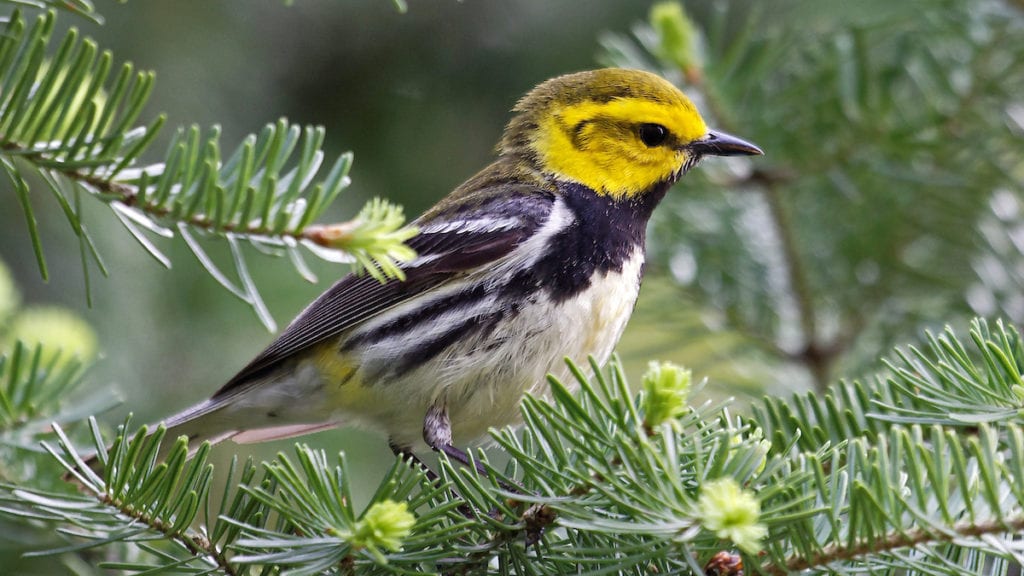
WHAT IS Forestry for Maine Birds?
Forestry for Maine Birds (FFMB) integrates bird conservation with forest management and planning by:
- Improving habitat for priority forest birds and a variety of other wildlife species,
- Engaging woodland owners in forest stewardship,
- Working alongside other forest management goals, and
- Enhancing the value and enjoyment of Maine woodlands for many generations to come.
FFMB works with three key audiences:
Landowners, who have the potential to create high-quality bird habitat on their woodlands by managing “with birds in mind.”
Foresters, who have the expertise to create management plans that consider what habitat birds need and how to create it over the long-term.
Loggers, who implement forest management plans and can improve habitat for birds in how they operate equipment and manage work sites.
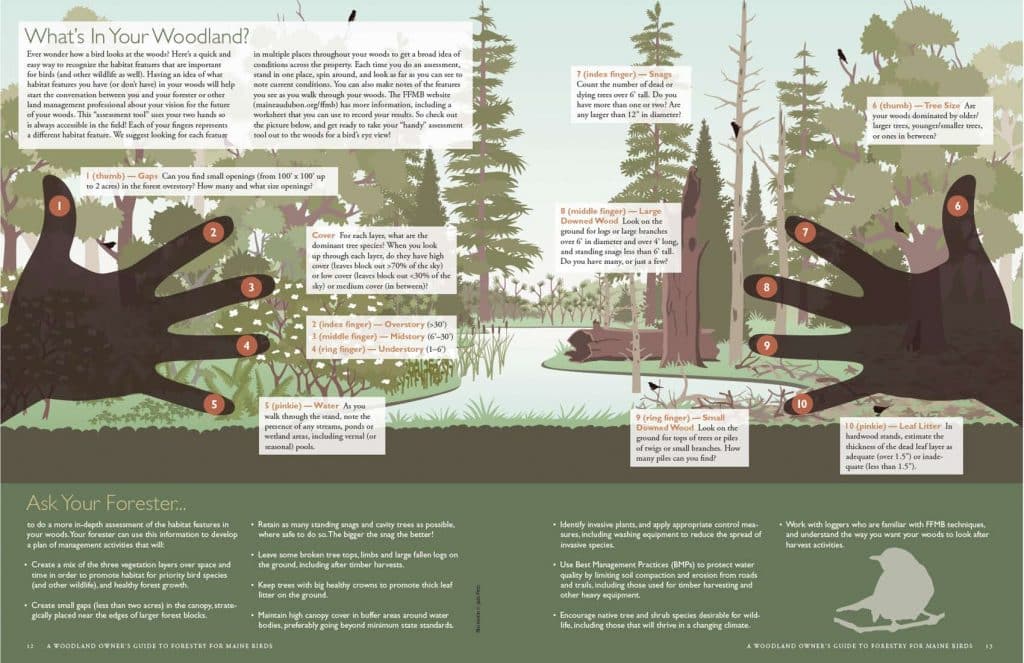
FFMB is a cooperative effort led by Maine Audubon in partnership with the Maine Forest Service, the Maine Department of Inland Fisheries and Wildlife, and the Forest Stewards Guild. The program was adapted from initial work done in Vermont by Vermont Audubon and the Vermont Department of Forests, Parks and Recreation. Rather than focusing just on Northern Hardwood forests as did Vermont, the Maine team adapted and expanded the Vermont program to address bird habitat needs in four different forest types – Oak/Pine, Northern Hardwood, Northern Mixedwood, and Northern Softwood.
 The FFMB approach is detailed in the Guidebook for Foresters, published in the Fall of 2017. Although fairly technical and geared toward foresters, the guidebook is a great resource for anyone wanting to know more about FFMB.
The FFMB approach is detailed in the Guidebook for Foresters, published in the Fall of 2017. Although fairly technical and geared toward foresters, the guidebook is a great resource for anyone wanting to know more about FFMB.
Hard copies of the Guidebook for Foresters are available to licensed foresters for free and to others for $12 each (plus shipping if needed). Email conserve@maineaudubon.org to request a copy. The guidebook is also available for download as a PDF.
Additional materials for foresters interested in learning more about FFMB and how to integrate wildlife-friendly practices into management plans can be found on our Resources for Foresters page.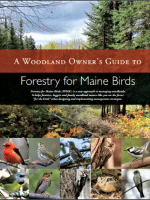
A landowner guidebook, The Woodland Owner’s Guide to Forestry for Maine Birds, is also available in hard copy by request and for download as a PDF.
Additional materials for landowners interested in learning more about FFMB and how to integrate wildlife-friendly practices into management plans can be found on our Resources for Landowners page.
A logger’s pamphlet, The Logger’s Guide to Forestry for Maine Birds, is also available in hard copy by request and for download as a PDF.
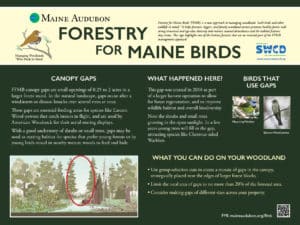
The same forests that make Maine one of the top three maple producing states also support some of the highest diversity of nesting birds in the country. In an effort to bring together Maine’s maple industry with bird conservation, Maine Audubon has partnered with Audubon Vermont, University of Maine Cooperative Extension, and the Maine Maple Producers Association to bring the Bird-Friendly Maple program to the Pine Tree State. Read more about this new project here >
For those with limited time, Maine Audubon offers slide presentations about the Forestry for Maine Birds program that typically last about an hour, maybe a little more with questions and answers, and can be tailored to your audience and timeframe. Please get in touch with Hannah Young to schedule a presentation at conserve@maineaudubon.org or 207-781-2330 x219. This is a good introduction to the program, but for those of you interested in using FFMB to help manage your woodland, we strongly encourage you to attend one of our field workshops if you possibly can.
Bird-friendly Forestry Webinars to Support New England Birds: Highstead, the Cornell Lab of Ornithology, Audubon Vermont, and the Northeast Bird Habitat Conservation Initiative held Bird-friendly Forestry webinars focused on best practices in habitat restoration and forestry management for birds in New England, with a focus on at-risk species in October, 2021; Maine Audubon’s Director of Conservation, Sally Stockwell, was on the panel and you can watch recordings here.
Between April and October, Maine Audubon, The Forest Stewards Guild, the Maine Department of Inland Fisheries and Wildlife, and the Maine Forest Service host workshops for foresters, landowners, and loggers. These workshops bring Forestry for Maine Birds into the field, and includes background on bird identification, a primer on habitat features different birds need, and an opportunity to practice doing habitat assessments to determine which features are and are not present in the forest, and how to use that information to develop a management plan “with birds in mind.”
Workshops are usually conducted with a local host organization or agency, are tailored to the specific audience and location, and typically include an initial indoor classroom style presentation followed by a field-based program, but also can be conducted entirely outdoors. Presenters include a professional wildlife ecologist and licensed forester and sometimes a local natural resource professional as well.
Request a FFMB Workshop: If you are interested in hosting a workshop later this year or next year, please email conserve@maineaudubon.org or call 207.781.2330 ext. 219 to determine what is possible at your site!
Virtual Resources: We also offer a FFMB webinar program. We can host a live webinar for your organization or group. Contact Maine Audubon at conserve@maineaudubon.org to discuss what’s possible.
Watch sample webinars:
Webinar hosted by Maine Coast Heritage Trust, a webinar geared specifically for land trusts |
|
We have created a series of videos filmed in the woods so that you can get the essence of a workshop, including an introduction to Forestry for Maine Birds and why Maine is so important for birds; an introduction to the habitat features birds need; a conversation with a Maine Forest Service forester and private consulting forester; and links to more resources and funding opportunities to help you manage your woodland “with birds in mind.”
| Title | Description | Video | |
|---|---|---|---|
| Part 1: What is Forestry for Maine Birds? | Join a wildlife ecologist and two professional foresters to learn about the international significance of Maine’s forests for breeding forest birds, and how to manage your woodland “with birds and other wildlife in mind.” | 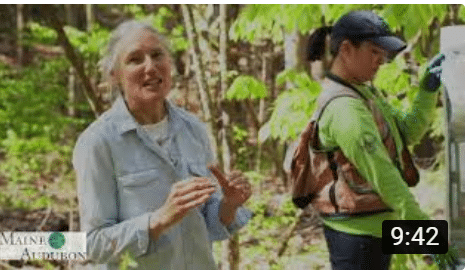 Watch the video | |
| Part 2: What Forest Habitat Features Do Birds Use? | Watch forester Amanda Mahaffey introduce you to 10 important habitat features that are important to breeding forest birds and other wildlife. Learn how to do a “handy habitat assessment” of your own woodland to find out how many you have. | 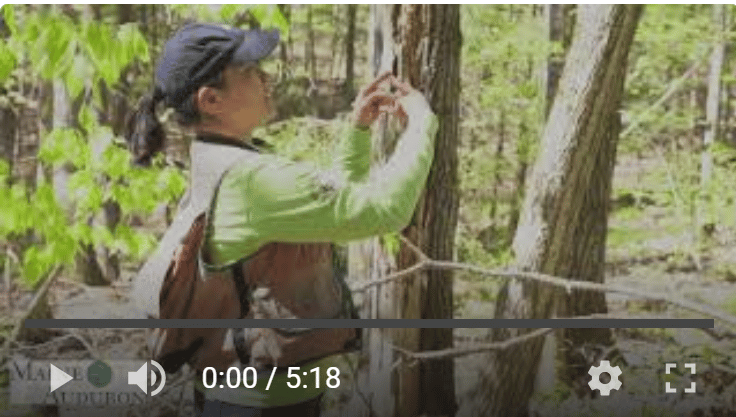 Watch the video | |
| Part 3: Live Habitat Features | Watch forester Andy Shultz discuss in detail the five live habitat features of a Maine forest that are important to breeding forest birds and other wildlife. | 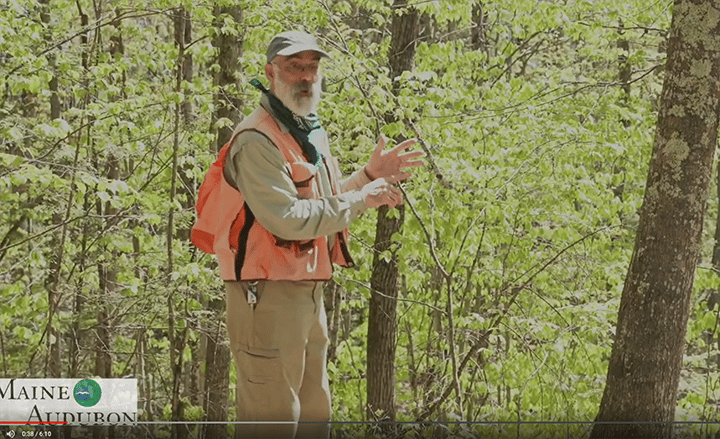 Watch the video | |
| Part 4: The Importance of Dead Wood | Join wildlife ecologist Sally Stockwell as she extols the virtues of dead wood, and showcases why dead standing and down wood is important for breeding birds and other wildlife. | 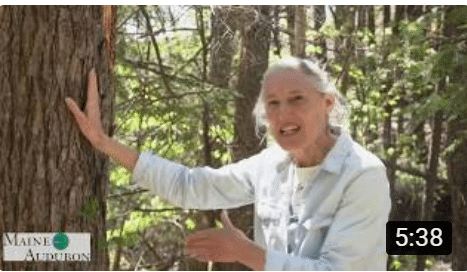 Watch the video | |
| Part 5: Putting Your Forest Management Plan into Action | Hear from three professional foresters about how to get the help and advice you need to put together and pay for a management plan that meets all your goals for the future of your woodland. | 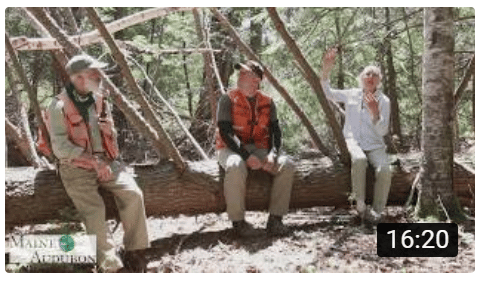 Watch the video | |
| Bonus Episode 1: Taming Invasive Plants in My Woodland | Hear from two professional foresters about what resources are available to help you identify, contain, and limit the spread of nonnative, invasive plants in your Maine woodland, including color booklets, invasives experts, and funding. | 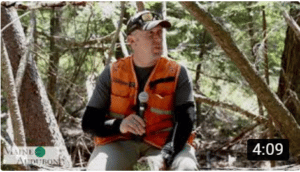 Watch the video | |
| Bonus Episode 2: Landowner Services | Interested in having your woodland certified as being sustainably managed to provide wood, wildlife, water, and recreation? Learn how to join the Maine Tree Farm program. Also learn about how the Maine TREE Foundation is helping educate youth and adults about the value of family woodlands and forest products. | 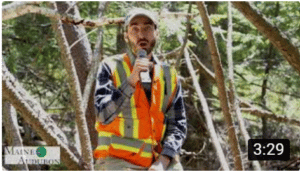 Watch the video | |
| Bonus Episode 3: Tips for Towns: How to manager your community forest | Take a tour of one of Falmouth’s community forests and see firsthand how it is being managed with Town Forester Paul Larrivee. | 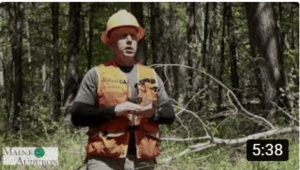 Watch the video |
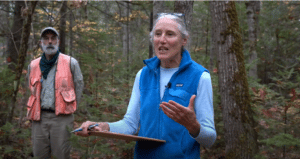 Sally Stockwell, Andy Shultz, and Amanda Mahaffey show you how to assess your forest in this tutorial video: Forestry for Maine Birds Tutorial – How to Complete a Habitat Assessment.
Sally Stockwell, Andy Shultz, and Amanda Mahaffey show you how to assess your forest in this tutorial video: Forestry for Maine Birds Tutorial – How to Complete a Habitat Assessment.
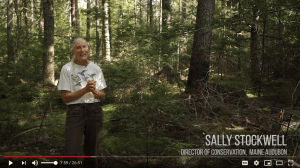 Tour the U.S. Forest Service Penobscot Experimental Forest and see how different kinds of silviculture and harvesting have changed the forest over the past 60 years. Learn from experts at the University of Maine, Maine Forest Service, Maine Audubon, and others around the state about how to manage your woodland for the future, considering timber production, wildlife habitat, climate change, pests and disease. Watch this video made by the University of Maine forestry graduate student Maren Granstrom.
Tour the U.S. Forest Service Penobscot Experimental Forest and see how different kinds of silviculture and harvesting have changed the forest over the past 60 years. Learn from experts at the University of Maine, Maine Forest Service, Maine Audubon, and others around the state about how to manage your woodland for the future, considering timber production, wildlife habitat, climate change, pests and disease. Watch this video made by the University of Maine forestry graduate student Maren Granstrom.
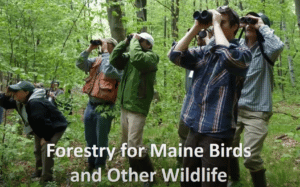 Conservation Director Sally Stockwell gave a presentation to the Maine Master Naturalist Program about the Forestry for Maine Birds program (November 2020); watch a recording of the webinar .
Conservation Director Sally Stockwell gave a presentation to the Maine Master Naturalist Program about the Forestry for Maine Birds program (November 2020); watch a recording of the webinar .
